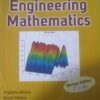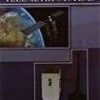No products in the cart.
Return To Shop
Menu
Categories
- Physics Books
- UPTU & AKTU Books
- Dictionaries / Language Learning
- Yoga
- Beauty and Fitness
- Text and Reference Books
- Biology Books
- Computer Science Books
- Personality Development
- Meditation
- Ayurveda / Homeopathy / Herbal Cure
- Used or Second Hand Books
- Accounting
- Children Books
- Family and Relationships
- Health & Fitness
- Crafts and Hobbies
- Mechanical Engineering Books
- Biotechnology Books
- Delhi University Books
- General
- Parenting
- Games & Quizzes
- Electrical Engineering Books
- Food Technology
- Management Books
- Biographies
- Nutrition
- Jokes - Humour
- Mathematics Books
- Hindi Books
- Best Deals: Top Selling Books
- Academic Book
- Law Books
- Class-11th Books
- Chemistry Books
- New Arrivals
- Electronics Telecom
- Class- 9th books
- Civil Engineering Books
- Medical Books
- School Books
- Environmental Engineering Books
- Electronics Communication Books
- Class- 10th class
- Free Online e-Books
- Class 12 th Books
- NCERT
- Motivational
- English Novel
- Astrology / Palmistry / Vastu / Hypnotism etc
- Competitive Examinations
- Engineering Books
- Electrical and Electronics Engineering (EEE)
- Encyclopedia
- Gift Items
- Cookery
- Economics
- Amity University ASET Books
- Alternative Therapy
- Spiritual Books
- Stress Management

Advanced Engineering Mathematics by Pratibha Mishra and Ruchi Mishra and V P Mishra and Mohit Mishra
₹750.00
Categories: Electronics Communication Books, Text and Reference Books
Backorder means you can still order but the product's availability might have to be double checked with warehouses as there are other pending orders. We will ship it to you subsequently.
Out of stock
visible
Advanced Engineering Mathematics by Pratibha Mishra Ruchi Mishra V P Mishra and Mohit Mishra
is a detailed resource for engineering students. This book focuses on essential mathematical topics, from linear algebra to differential equations, and emphasizes their practical applications in engineering fields. The content is structured to provide both theoretical knowledge and real-world problem-solving skills.
One of the key features of “Advanced Engineering Mathematics” is its step-by-step approach to explaining complex mathematical concepts. The authors ensure that each topic is presented clearly, with ample examples and exercises for students to practice and apply what they have learned. This approach enhances understanding and helps students tackle engineering problems effectively.
The book covers a broad range of subjects, including Fourier series, Laplace transforms, and vector analysis, which are essential tools for solving engineering problems. The practical applications and problem-solving strategies make this book an ideal reference for students across various engineering disciplines.
Whether you’re preparing for exams or working on engineering projects, “Advanced Engineering Mathematics” offers a reliable and accessible resource to strengthen your mathematical foundation. The book’s logical structure and inclusion of real-world examples make it an excellent guide for mastering engineering mathematics. With its clear explanations and practical exercises, this book is an invaluable tool for both students and professionals seeking to refine their mathematical skills in engineering contexts.
| Weight | 4.19 kg |
|---|
Related products
Jurisprudence And Legal Theory 5th edition By V D Mahajan
David Copperfield (Wordsworth Classics) by Charles Dickens(1997-08-05)
Communication Skills By Sanjay Kumar
A Modern Approach To Verbal And Non-Verbal Reasoning (2 Colour Edition) By R S Aggarwal
Combo Bare Acts the code of criminal procedure,1973,the indian Evidence Act,1872
Surveying Volume-I By Dr. K.R. ARORA
Environmental Studies By Suresh K Dhameja | Buy to save >
Advanced Engineering Mathemati...
₹795.00 Original price was: ₹795.00.₹499.00Current price is: ₹499.00.


TELEMETRY SYSTEMS
₹230.00 Original price was: ₹230.00.₹140.00Current price is: ₹140.00.
More
More





